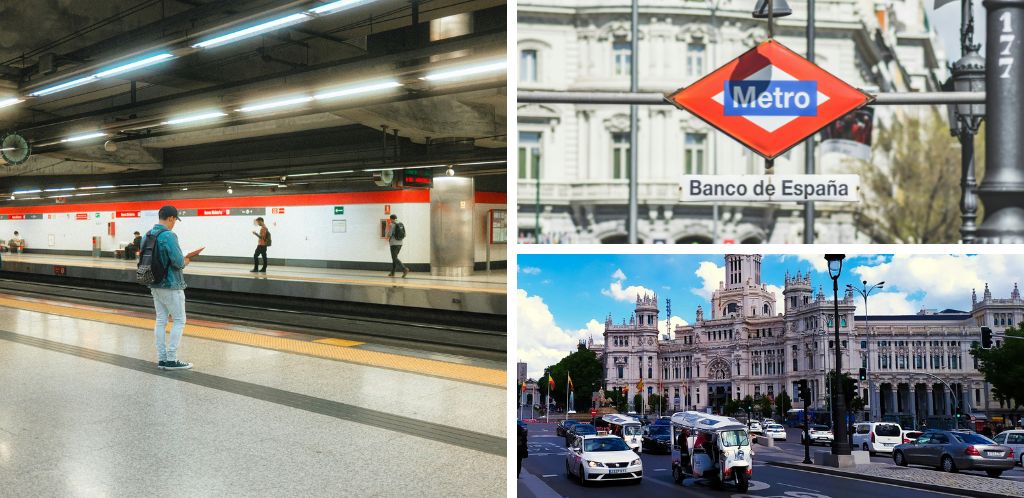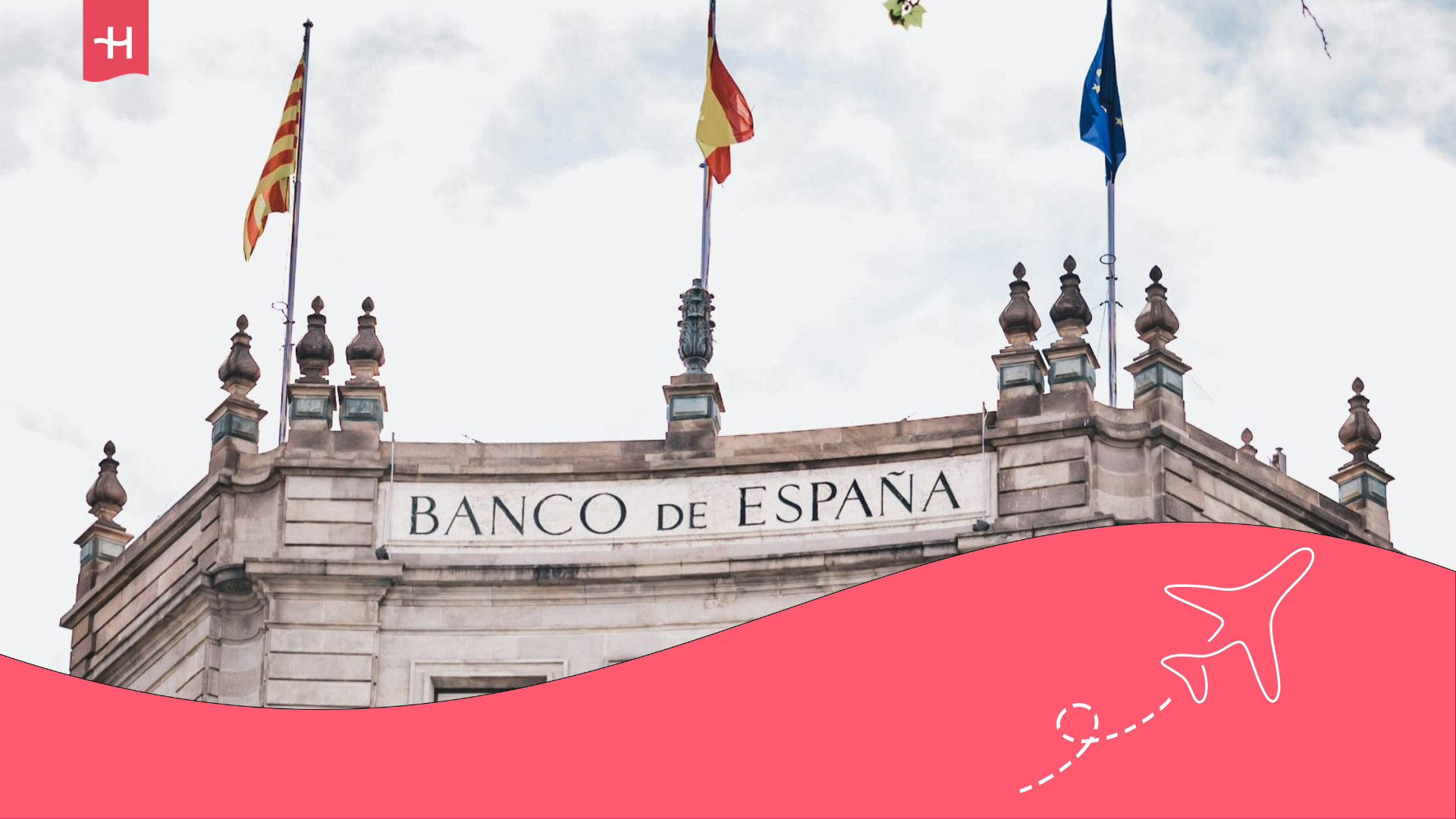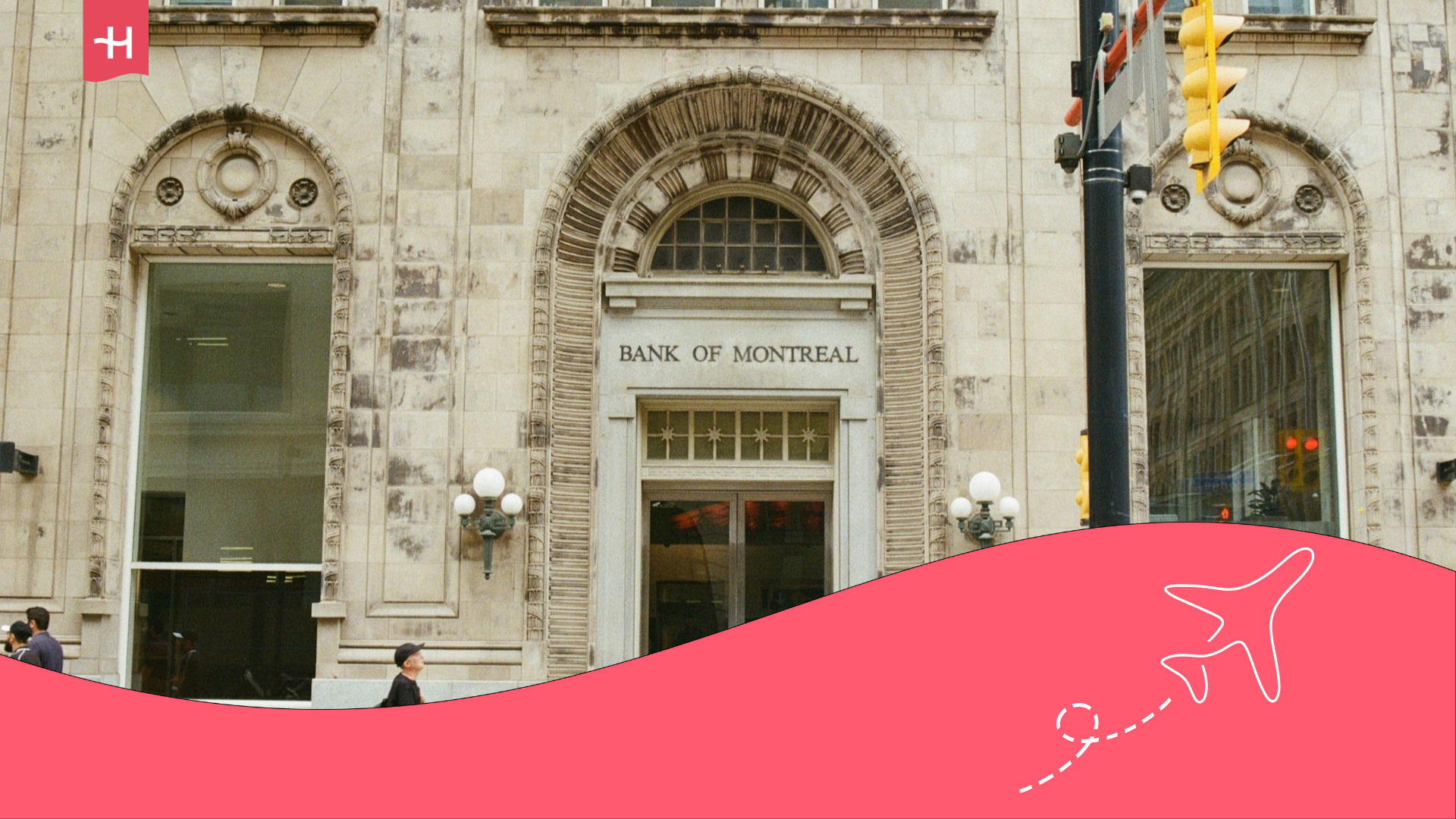Cost of living in Spain: Food, transport, and more
Are you thinking of spending some time living in Madrid or another Spanish city? We'll tell you what the cost of living in Spain will be in 2025. With examples!
Are you considering spending some time in Madrid, the Balearic Islands or another Spanish destination? In that case, when preparing your move or getaway, it’s important to understand the cost of living in Spain. Knowing approximate prices for groceries, housing and services will help you plan better.
Today we’ve prepared an article with examples of the expenses you’ll face while living here. In general, we’ve noticed prices increased by 15% in recent years. This rise shows especially in rent and accommodation. Join us to discover the approximate monthly budget you’ll need.
1. Average cost of accommodation in Spain
A good way to measure a country’s cost of living is the average price of accommodation. In Spain, costs have increased a lot recently. Although prices used to be lower than in other European countries, the 2025 trend shows they’re levelling up. Media outlets and opinion leaders report strong growth across every type of lodging. How much does it cost to stay across Spain? Let’s check some figures:
1. 1. Furnished apartment rentals
Finding in Spain in 2025 a fair balance between price, comfort and location is very difficult. If you want to stay in a furnished flat in a major city, prepare to spend a significant amount monthly. The average rent in Spain is €1,080 ($1,166) per month. The highest prices appear in Madrid (€20.88 per square metre) and the Balearics (€18.58 per square metre).
In smaller cities like Málaga or Valencia, rents can be up to 30% cheaper. Expect average prices of €900-1,000 ($972-1,080) for a one-bedroom flat.
1. 2. Co-living spaces
If you read our post about the best colivings in Spain, you already know they’re not cheap. Prices depend a lot on the city and the services included, but the average ranges between €800 and €1,200 ($864-1,296) per month.
1. 3. Airbnb
Airbnb can work well for a few weeks or days, but prices aren’t always the most competitive. In recent years, as in other parts of the world, Airbnb rates in Spain increased significantly. In Madrid or Barcelona, the average cost per night is €80 ($83). This means a full month would cost around €2,400 ($2,513).
Looking at smaller cities? You might find cheaper options for €1,500-1,700 ($1,571-1,780) per month.
1. 4. Hotels
If you prefer staying in a 3-star hotel, the average price is €90 ($97) per night. In popular destinations like Costa del Sol or Barcelona, room rates can be much higher, especially during peak season.

2. Cost of food in Spain
Another key factor when analysing cost of living is food. How much does a supermarket shop cost? Is eating out affordable? Knowing these answers will help you calculate your monthly budget in Spain. Here are some prices you’ll find in supermarkets and restaurant menus:
2. 1. Supermarket prices
If you check catalogues from Lidl, Mercadona or Carrefour —three of Spain’s largest supermarket chains—, you’ll see slight differences. On average, expect to spend between €78 and €87 ($84-94) for a basket of essentials. Let’s see average prices for some everyday items:
- Milk (1 litre): €1.04 ($1.12)
- Eggs (dozen): €2.99 ($3.23)
- Chicken breast (500 g): €3.90 ($4.21)
- Tomatoes (1 kg): €2.03 ($2.19)
- Local cheese (500 g): €7.00 ($7.56)
- Local beer (0.5 l): €1.12 ($1.21)
Your final bill will depend on where you shop and which products or brands you choose. Overall, groceries remain affordable compared with other European countries.
2. 2. Eating out costs
Dining out in Spain can be very cheap or surprisingly expensive. It all depends on the place and the type of food. Let’s look at some common examples:
- Breakfast: a coffee with toast or pastry costs €2.50-4.00 ($2.70-4.32) in most local cafés.
- Lunch: a typical menú del día (starter, main, dessert and drink) costs around €14 ($15.12). In central Madrid or Barcelona, prices often reach €15.50 ($16.74).
- Dinner: a mid-range restaurant dinner costs €20-35 ($21.60-37.80) per person.
3. Transport prices in Spain
Transport is another key factor in Spain’s cost of living. Compared to other countries, moving around Spain in 2025 remains affordable. Average prices for petrol and public transport vary depending on the city. Let’s review some figures:
3. 1. Public transport: metro, buses and passes
If you’ll use public transport often, passes remain the most cost-effective option. The government has subsidised prices for some years, cutting them by 50%. Current plans show this measure will stay until June 2025.
- Single bus ticket in Madrid: €1.50 ($1.62)
- Madrid metro (10 trips): €12.20 ($13.18)
- Monthly pass in Barcelona:
- 1 zone: €35.20 ($38.00)
- 2 zones: €47.40 ($51.20)
- 3 zones: €66.56 ($71.90)
3.2. Fuel and electric car charging
If you prefer driving, these are the average prices:
- Petrol: €1.739 ($1.88) per litre
- Electricity for EVs: €0.3566 ($0.39) per kWh
- Cost per 100 km in EV: €7.13 ($7.70)
- Cost per 100 km in petrol car: €13.39 ($14.50)
3.3. Shared bicycles
Many Spanish cities offer bike-sharing systems, and prices are quite affordable:
- BiciMAD (Madrid): annual pass €25 ($27) + ride cost.
- Bicing (Barcelona): annual pass €50 ($54). First 30 minutes free per trip.
3.4. Cost of living in Spain: Uber and taxis
Do you prefer private transport? Price simulator apps show that Uber and taxis in Spain remain viable options. Their cost depends on distance and demand:
- 5 km Uber ride in Madrid: €8-12 ($8.60-12.90)
- Taxi starting fare in Madrid: €3.50 ($3.80)
- Taxi cost per km: €1.10 ($1.18)
For long rides or peak hours, Uber can be cheaper than traditional taxis. In heavy traffic, the difference isn’t that big.
3.5. Owning a car in Spain?
If you’d rather own a vehicle, here are the key costs:
- Car insurance (basic third-party): €300-500 ($324-540) yearly
- Tesla Model 3 (popular EV in Europe): from €36,470 ($39,400)
Having a car in Spain is expensive if you live in a big city. Above all because parking is usually a problem in all of them. However, if you live in areas with limited public transport, it can be worth it.
As you see, Spain offers transport options for all budgets. For city life, the best choice combines public transport and cycling. For long distances, EVs are the most cost-efficient option.

4. Healthcare costs in Spain
Spain offers a high-quality public healthcare system. Besides Spanish citizens, legal residents can also access it under the same conditions. You just need to register in the local census. The only thing you need is to be registered as a resident. In emergencies, anyone will receive treatment without distinction.
For those without free healthcare rights, the best choice is health insurance for foreigners in Spain. Private insurance also helps reduce waiting times and gives access to specialists. Let’s check the costs:
4.1. Public healthcare in Spain
Although the public system is free for residents, some services require co-payment, such as medicines. For example, medicines.
- GP consultation: free for residents
- Emergency treatment: free in public hospitals
- Prescriptions: co-payment ranges from 10%-60% of the drug price. Sometimes depending on the income of the patient
Don’t have access to public healthcare or insurance? Here are some private clinic prices:
- General consultation: €50-100 ($54-108)
- Dentist consultation (cleaning or check-up): €80 ($86)
- Appendicitis surgery: €3,000-6,000 ($3,240-6,480)
4.2. Cost of living in Spain: private health insurance
Private insurance is the best option for those without access to the public system or who want faster treatment. Prices depend on coverage level. In general:
- Basic insurance with co-payments: from €18 ($19.40) per month
- Full coverage without co-payments: €50-100 ($54-108) per month
You’ll find accessible plans for foreigners from companies like Sanitas. For more options, don’t miss our post about the best international health insurance providers.
4.3. Over-the-counter medicine prices
Basic non-prescription medicines in Spanish pharmacies usually aren’t very expensive:
- Paracetamol (20 tablets): €2 ($2.16)
- Ibuprofen 600 mg (40 tablets): €3 ($3.24)
- Antihistamines: €5-8 ($5.40-8.64)
5. Internet and phone plan prices in Spain
Now let’s look at internet services. If you need constant connectivity, Spain offers several options. Many companies provide home internet or mobile data. Prices vary depending on speed and services included.
Here are some examples of current prices. Keep in mind some providers announced increases of 3%-5% in the coming months.
5.1. Home internet: prices and speeds
Main operators in Spain offer fibre optic packages with speeds from 300 Mb up to 1 Gb.
- Digi (300 Mb): €10 ($10.80) per month
- Finetwork (600 Mb): €23.90 ($25.80) per month
- Movistar/Vodafone/Orange (1 Gb): €45-55 ($48.60-59.40) per month
5.2. Mobile plans: calls and data
Do you prefer a plan including calls and data? Here are some price examples you’ll find when signing up:
- Finetwork: 10 GB data, unlimited calls and 1,000 SMS for €5 ($5.40) monthly
- Movistar/Vodafone/Orange: €15-30 ($16.20-32.40) monthly, depending mainly on the data package
5.3. Global internet plans
If you’re planning to spend time in Spain but won’t stay permanently or intend to travel often, you’ll also find global internet options. Here are the monthly plans from Holafly:
- 25 GB of data, allowing multiple device connections, for $49.90 (€46.30) per month
- Unlimited data, also with multiple device connections, for $64.90 (€60.20) per month
All plans offer 5G speed and work in over 160 countries. You can activate them in a few steps via the app, without changing SIMs. With Holafly you can also get unlimited data via a Spain eSIM. Choose the days you need, keep your SIM, and avoid roaming costs. best esim internet for digital nomads
Important: If you are a frequent traveler and want to stay connected without worrying about expensive roaming or looking for a new SIM at every destination, Holafly’s subscription plans are for you. With a single eSIM, enjoy internet in more than 160 countries for a fixed price and no surprises on your bill. Travel without limits and connect easily and securely! 🚀🌍

6. Cost of living in Spain: leisure activities
You can’t spend time in Spain without enjoying its huge cultural and entertainment offer. It is huge. Prices vary by city and activity. How much does cinema, monuments or streaming subscriptions cost in 2025? Let’s see some examples:
6.1. Cinema and theatre
- Cinema ticket: around €9 ($9.70) in standard halls. Premium formats like IMAX or 3D cost €12-15 ($12.90-16.20).
- Theatre or musicals: prices vary by city and show. In Madrid or Barcelona, a ticket can cost between €15 and €50 ($16.20 – $54). More expensive if you want to see them from the front rows.
6.2. Parks and zoos
- Theme parks: for example, Isla Mágica in Seville costs €29.90 ($32.30) for adults. Larger parks like PortAventura or Parque Warner cost €50-60 ($54-64.80).
- Zoos: adult entry to Madrid Zoo or Bioparc Valencia is about €20 ($21.60).
6.3. Streaming and TV
If you prefer entertainment at home, here are monthly fees for the main platforms in Spain:
- Netflix: €12.99 ($14) standard plan
- Spotify Premium: €9.99 ($10.80) per month.
- HBO Max: €9.99 ($10.80) per month.
- Amazon Prime Video: €4.99 ($5.40) per month.
6. 4. Entry to major tourist sites
Planning to visit Spain’s main monuments and cultural landmarks? Expect these entry fees:
- Córdoba Mosque: €13 ($14)
- Sagrada Familia (Barcelona): €26 ($28.10)
- Alhambra (Granada): €19 ($20.50)
- Prado Museum (Madrid): €15 ($16.20). Free entry available at certain hours.
6.5. Music events and festivals
Spain is famous for its big festivals and concerts. Prices vary by artist and location:
- International concerts: €50-150 ($54-162)
- Music festivals: passes for events like Dreambeach in Almería cost €70-120 ($75.60-129.60)
And that’s our full review of Spain’s cost of living in 2025. It may not be Europe’s cheapest destination, but it’s still affordable compared with other countries.





 Language
Language 


















 No results found
No results found







